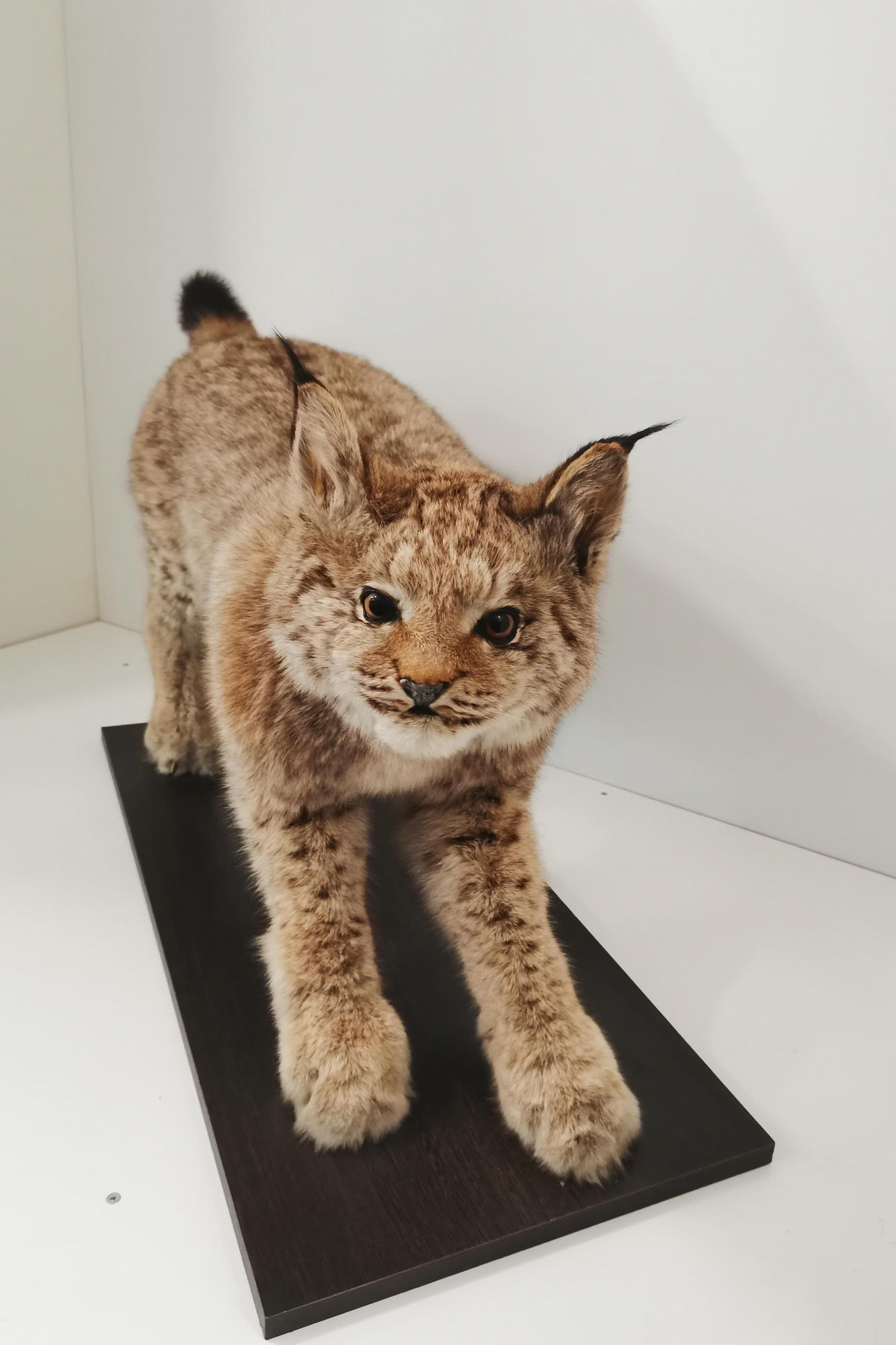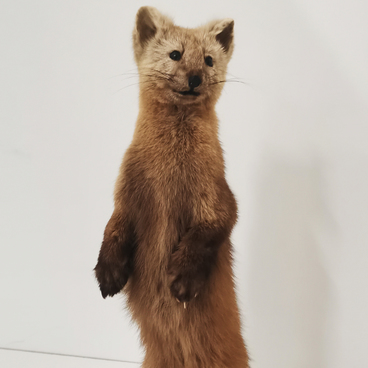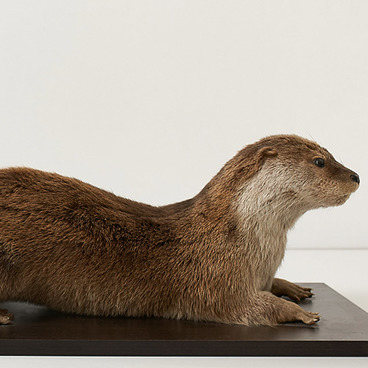Lynxes are predatory mammals, representatives of the cat family. The genus includes 4 species, with several subspecies distinguished. Eurasian lynx, also called common or northern lynx, dwells in Russia. Although its habitat is wide, from the European part of the country and the Urals to Western and Eastern Siberia, Amur and Sakhalin, its population is recognized as small. In Moscow region, the animal is under special protection. In several regions of Russia, and in the neighboring Belarus and Ukraine, it is listed in the Red Book.
The weight of adult males reaches 34 kg, on average from 20 to 28 kg. Its body length with head is from 80 to 135 cm. Females are smaller and lighter: from 75 to 100 cm and from 15 to 25 kg, respectively. The appearance of the animal is different from other feline animals: it has a short, dense body, high legs, and a short, as if chopped off, tail. The most characteristic features of the exterior that make its appearance recognizable, are the thick brushes on the tips of the erect triangular ears, and the elongated hair on the cheeks forming pronounced ‘side-whiskers’.
Lynx fur, especially its winter variant, is very thick, densely packed and silky. Its color ranges from sand-fawn and ash-blue to sorrel and dark gray with a chestnut undertone. The pattern also varies, from large bright spots throughout the body to weakly pronounced spotting and its complete absence. Color variability is related to the habitat: gray-brown tones with a silver ‘veil’ are characteristic of the northern latitudes, and light-red individuals with blurry specks are found in warmer regions.
Lynx is a typical forest animal, large and active predator leading a twilight lifestyle. The basis of its food is blue hare. Lynx watches over the prey on the trails, finds it in the den and chases. In the regions where hare population is small, lynx preys on small ungulates: musk deer, roe deer, chamois, young deer, red deer, elk and reindeer. As a rule, it will attack lonely yearlings, wounded and weakened animals. Birds, such as partridges, hazel grouse, less often black grouse and capercaillie, can also become prey. Small rodents such as pikas and voles serve as reserve food.
Walking around its territory, the beast follows the beaten path. Lynx has no permanent shelter; in case of a successful hunt, it will arrange a lair 100 to 150 meters away from the prey. Lynx is not afraid of a ski or cross-country trail and is able to run along it to facilitate its task.
The mating season falls on February-March, and 60 to 70 days after, the female gives birth to 2 up to 5 kittens in a secluded den under the roots of a fallen tree. Kids remain with their mother until about one year old. In the lynx population, early introspective aggression phenomenon has been noted: littermates fight fiercely, which sometimes leads to the death of weaker ones.
In other mammals behaving similarly, the cause is competition for food. Lynxes do not reveal such correlation. Scientists continue to study the phenomenon, which is a serious problem in the conservation and reproduction of the species. Wild lynxes that have survived fights with their siblings and avoided meeting with poachers, can live for up to 20 years.
The weight of adult males reaches 34 kg, on average from 20 to 28 kg. Its body length with head is from 80 to 135 cm. Females are smaller and lighter: from 75 to 100 cm and from 15 to 25 kg, respectively. The appearance of the animal is different from other feline animals: it has a short, dense body, high legs, and a short, as if chopped off, tail. The most characteristic features of the exterior that make its appearance recognizable, are the thick brushes on the tips of the erect triangular ears, and the elongated hair on the cheeks forming pronounced ‘side-whiskers’.
Lynx fur, especially its winter variant, is very thick, densely packed and silky. Its color ranges from sand-fawn and ash-blue to sorrel and dark gray with a chestnut undertone. The pattern also varies, from large bright spots throughout the body to weakly pronounced spotting and its complete absence. Color variability is related to the habitat: gray-brown tones with a silver ‘veil’ are characteristic of the northern latitudes, and light-red individuals with blurry specks are found in warmer regions.
Lynx is a typical forest animal, large and active predator leading a twilight lifestyle. The basis of its food is blue hare. Lynx watches over the prey on the trails, finds it in the den and chases. In the regions where hare population is small, lynx preys on small ungulates: musk deer, roe deer, chamois, young deer, red deer, elk and reindeer. As a rule, it will attack lonely yearlings, wounded and weakened animals. Birds, such as partridges, hazel grouse, less often black grouse and capercaillie, can also become prey. Small rodents such as pikas and voles serve as reserve food.
Walking around its territory, the beast follows the beaten path. Lynx has no permanent shelter; in case of a successful hunt, it will arrange a lair 100 to 150 meters away from the prey. Lynx is not afraid of a ski or cross-country trail and is able to run along it to facilitate its task.
The mating season falls on February-March, and 60 to 70 days after, the female gives birth to 2 up to 5 kittens in a secluded den under the roots of a fallen tree. Kids remain with their mother until about one year old. In the lynx population, early introspective aggression phenomenon has been noted: littermates fight fiercely, which sometimes leads to the death of weaker ones.
In other mammals behaving similarly, the cause is competition for food. Lynxes do not reveal such correlation. Scientists continue to study the phenomenon, which is a serious problem in the conservation and reproduction of the species. Wild lynxes that have survived fights with their siblings and avoided meeting with poachers, can live for up to 20 years.


